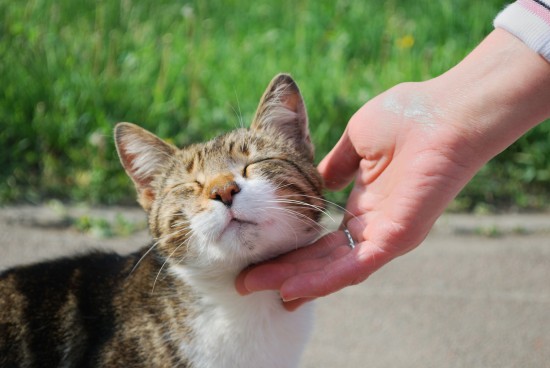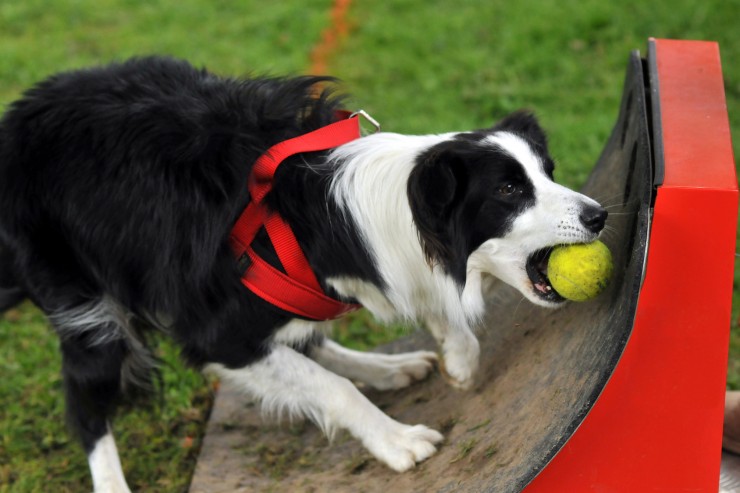Clinical examination – I think it’s very important to stress that it’s not just about dermatology. I know a very famous veterinary dermatologist who failed the certificate the first time around because he missed a murmur in a dog. And you know, I think it’s very important that we do a very thorough examination, because I want to spot things like murmurs, in case I’m going to start to think about sedating the dog or the cat. I want to turn the pet over, because quite often there are lesions underneath. And if the pet is aggressive, that might be very difficult to do. So we may need to look at sedation to make sure we get a really good look at the pet. I’m very, very keen on my electric clippers. I will wield them at the smallest excuse. Because people will see a pet, and they’ll say, Oh, there aren’t that many skin lesions on it. But the minute that you clip up and actually look at the skin, you begin to see that what was thought of as a small problem like acute moist dermatitis on the head is in fact much more widespread.
And so the dog that you were previously treating with Fuciderm (incorrect treatment), you need to treat the whole dog with antibiotics, systemic antibiotics. And then we look at lesion charting, so we know where the problem has been, so in four weeks’ time when we see the dog or cat again, we can actually see if those lesions have changed, and where they were. If your memory is very good, maybe you don’t need it, but I certainly use lesion charts. And there is my history form, so you can see the kind of details at the top, and then the animal’s signalment. History questions, when acquired, medical problem and progression, other pets and humans affected. Then I ask where the pet is kept and general clinical history. Then we do a general physical examination before we focus in on the skin and the veterinary dermatology examination. There’s a skin chart there for making a note of lesions. And then we can think about differential diagnoses, treatment, and any tests that we want to run.
So the General Physical Examination: oral cavity, thoracic auscultation, abdominal palpation, and lymph node palpation. Then we look at where the lesions are distributed, and the type and the pattern. We can make a note of the hair coat, how the quality of that looks. By clipping away, we get a good view of the skin, looking for secondary infections, looking for parasites. Of course, pruritus is manifested in different ways in dogs and cats. We may see a lot of hair is being lost, and we think that maybe this is an endocrine problem in cats – we used to talk about feline endocrine alopecia – whereas of course most of the cats are just licking their hair off. We know that cheyletiella tends to be a dorsal problem. We talk about moving dandruff. We know that otodectes will tend to just involve the ears, although it can generalize a little bit. And then scabies is often ears, pressure points, and theventrum.
So how to recognize lesions in veterinary dermatology? First of all, primary lesions are lesions that come about as a direct consequence of the disease. So if you have a pyoderma, you get a pustule. When that pustule bursts, it becomes a scaly epidermal collarette, which is a secondary lesion. So secondary lesions tend to occur after the primary lesion, or can be due to scratching/itching causing abrasions, dogs or cats licking the hair off, alopecia which is a secondary problem as opposed to perhaps a primary alopecia that we may see in hormonal cases. So just remembering that distinction – but of course, sometimes we can have alopecia which is primary, or it could be secondary – scaling which can be primary in the case of sebaceous adenitis, secondary in the case of an epidermal collarette.

 Socialising Your Kitten Or Young Cat
Socialising Your
Socialising Your Kitten Or Young Cat
Socialising Your
 Five Useful Things To Know About The Shih Tzu Puppy
Five Useful Thing
Five Useful Things To Know About The Shih Tzu Puppy
Five Useful Thing
 Teaching Your Dog The Basics Of Flyball
Teaching Your Dog
Teaching Your Dog The Basics Of Flyball
Teaching Your Dog
 10 Household Products That Can Make Your Dog Sick If They Eat Them
10 Household Prod
10 Household Products That Can Make Your Dog Sick If They Eat Them
10 Household Prod
 How The Dam Behaves Once Her Litter Is Born
How The Dam Behav
How The Dam Behaves Once Her Litter Is Born
How The Dam Behav